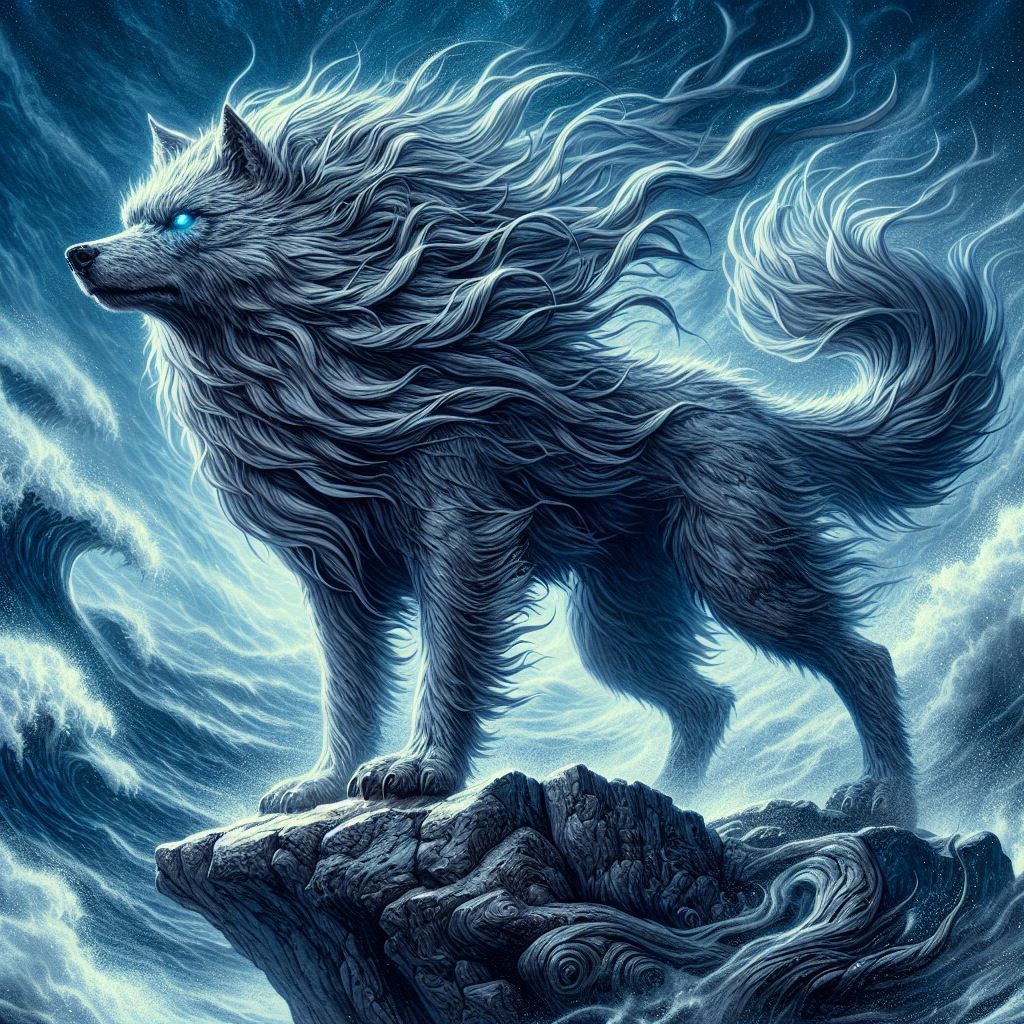The Bravery of Fenrir

The Bravery of Fenrir
The Bravery of Fenrir: Embracing the Wild Within
In the rich tapestry of Norse mythology, Fenrir the Wolf stands as a formidable figure—a symbol of untamed strength, primal instinct, and the unyielding spirit of the wild. Often depicted as a monstrous wolf of immense size and power, Fenrir’s mythological narrative resonates with timeless themes of courage, transformation, and the struggle for freedom. Beyond his fearsome reputation, Fenrir embodies a deeper, more complex archetype that speaks to the human experience of confronting inner challenges, embracing one’s true nature, and navigating the forces of change.
Unveiling the Myth of Fenrir
Fenrir, also known as Fenrisúlfr in Old Norse, is the offspring of the trickster god Loki and the giantess Angrboða. From his birth, Fenrir’s destiny was intertwined with prophecy and foreboding. It was foretold that he would grow to pose a great threat to the gods of Asgard, ultimately leading to catastrophic events during Ragnarök, the end of the world in Norse mythology. The Bravery of Fenrir
As a wolf of extraordinary size and strength, Fenrir quickly became a symbol of primal ferocity and untamed wilderness. His presence evokes both awe and fear among the gods, who sought to control him out of concern for the fate foretold by prophecy. Despite their efforts, Fenrir’s defiance and refusal to be bound symbolize his relentless pursuit of freedom—a theme that resonates deeply in his mythological journey.
The Binding of Fenrir: A Test of Bravery

Central to Fenrir’s myth is the tale of his binding—a pivotal moment that underscores themes of bravery, defiance, and the inevitability of destiny. According to legend, the gods of Asgard, fearing Fenrir’s growing power and the prophecy of Ragnarök, sought to restrain him. They crafted a series of magical chains, each stronger than the last, to ensnare the wolf. The Bravery of Fenrir
Fenrir, sensing the gods’ deception and recognizing the threat to his freedom, initially resisted the chains. It was only through cunning and guile that the gods persuaded him to allow himself to be bound, under the guise of testing the strength of the chains. The brave defiance displayed by Fenrir in the face of overwhelming odds underscores his unwavering determination and refusal to yield to fate.
Embracing the Wild Within: Lessons from Fenrir’s Myth

The myth of Fenrir resonates with profound lessons that transcend the realm of ancient Norse mythology, offering insights into the human experience and the journey of self-discovery:
1. Courage in Adversity: Fenrir’s bravery lies not only in his physical strength but also in his courage to confront adversity and challenges. His resistance to being bound symbolizes the bravery required to face the unknown and stand firm in one’s convictions. The Bravery of Fenrir
2. Embracing True Nature: Fenrir embodies the archetype of embracing one’s true nature—the wild and untamed aspects of the self that are often suppressed or feared. His myth challenges us to acknowledge and integrate these primal instincts as a source of strength and authenticity.
3. Defiance Against Tyranny: Fenrir’s defiance against the gods’ attempts to control him speaks to the universal struggle against oppression and tyranny. His story encourages individuals to resist external pressures that seek to limit personal freedom and autonomy.
4. Transformation and Growth: The binding of Fenrir represents a transformative journey—a process of growth and evolution that arises from confronting and overcoming challenges. His myth reminds us that adversity can be a catalyst for personal and spiritual growth. The Bravery of Fenrir
5. The Power of Prophecy: Fenrir’s role in Norse mythology highlights the complex interplay between fate and free will. His inevitable involvement in Ragnarök serves as a reminder of the cyclical nature of life and the impermanence of earthly existence.
Modern Relevance and Interpretations

In contemporary culture, Fenrir’s myth continues to inspire interpretations and adaptations that reflect its timeless themes:
1. Literature and Pop Culture: Fenrir’s character has appeared in various forms of literature, fantasy novels, and popular culture adaptations, often portrayed as a symbol of strength and resilience against overwhelming odds.
2. Psychological Symbolism: Psychologically, Fenrir’s myth can be interpreted as a metaphor for confronting inner demons and embracing aspects of the self that are often suppressed or feared. The Bravery of Fenrir
3. Environmental and Conservation Ethics: Fenrir’s representation of the wild and untamed wilderness resonates with environmental and conservation ethics, advocating for the protection of natural habitats and wildlife.
4. Personal Empowerment: Individuals may draw inspiration from Fenrir’s myth to cultivate bravery, resilience, and authenticity in their own lives, embracing challenges as opportunities for growth and self-discovery.
Conclusion
The Bravery of Fenrir
The myth of Fenrir the Wolf encapsulates a timeless narrative of bravery, defiance, and the unyielding spirit of the wild. Beyond his fearsome exterior lies a profound archetype that speaks to the human experience of confronting adversity, embracing one’s true nature, and navigating the forces of change with courage and resilience. Fenrir’s mythological journey serves as a powerful reminder of the transformative power of challenges and the bravery required to embrace the wild within each of us. As we reflect on his story, we are invited to explore the depths of our own inner landscapes, finding strength and inspiration in the enduring legacy of Fenrir the Wolf.
Through his myth, Fenrir beckons us to embrace the bravery within ourselves—to confront adversity with courage, to embrace our true nature with authenticity, and to navigate life’s challenges with unwavering resilience. In doing so, we honor the spirit of Fenrir and embody the timeless lessons of his mythological legacy.


